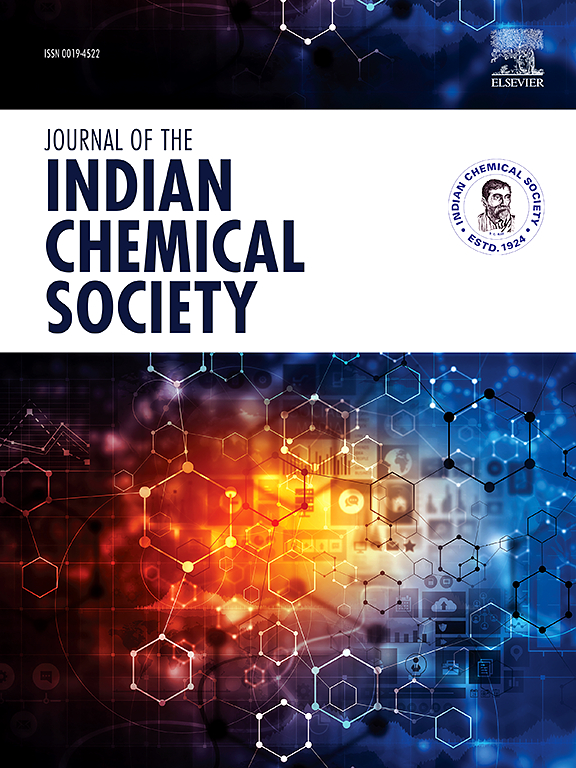二氯乙烯基二苯中卤素相互作用的研究:结构分析、DFT 模拟和分子建模
IF 3.2
4区 化学
Q2 CHEMISTRY, MULTIDISCIPLINARY
引用次数: 0
摘要
近年来,我们的研究小组合成了约两百种不同的二卤代乙烯基二氮烯。分析表明,这些化合物的类型(构象)相同--"自行车停靠站",但分子间相互作用的性质和本质却各不相同。国际理论化学和应用化学联合会(IUPAC)(2013 年)推荐的卤素-卤素关系性质概念无法解释合成体系中观察到的分子间相互作用的性质。本文首次以下面介绍的化合物为例,建立了一种算法,用于分析合成化合物的结构与其性质之间的关系,以及涉及氯原子的非共价相互作用的性质。计算中使用了带有极化和扩散函数的扩展基 6-311++G(d,p)。对原子电荷群进行了 NBO 分析。对合成体系的结构参数进行了计算,以研究其反应性、分子性质并确定涉及卤原子的非共价相互作用的性质。结果表明,Cl-Cl 三元组具有扁平的几何形状,能够相互之间以及与各种共面体系之间形成非典型的非共价相互作用。本文章由计算机程序翻译,如有差异,请以英文原文为准。

Study of halogen interactions in dichlorovinyldiazenes: Structural analysis, DFT simulation and molecular modeling
In recent years, our research group has synthesized about two hundred different dihalogenated vinyldiazenes. The analysis revealed that the type (conformation) of the compounds is the same-"bike stop", but the properties and nature of intermolecular interactions are different. The concepts of the nature of halogen-halogen relationships recommended by IUPAC (2013) do not explain the nature of the observed intermolecular interactions in the synthesized systems. In this paper, for the first time, using the examples of the compounds presented below, an algorithm is built for the relationship between the structure of synthesized compounds and their properties, and the nature of non-covalent interactions involving the chlorine atom.
The molecules presented in this paper were studied by the DFT method using the hybrid potential of B3LYP with the Gaussian 09 software package. The extended basis 6-311++G(d,p) with polarization and diffusion functions was used for calculations. Conducted NBO analysis of atomic charge populations. Calculations of the structural parameters of the synthesized systems were carried out in order to study the reactivity, molecular properties and identify the nature of non-covalent interactions involving the halogen atom. It has been established that the Cl–C–Cl triad has a flat geometry and is capable of forming atypical non-covalent interactions both with each other and with various coplanar systems.
求助全文
通过发布文献求助,成功后即可免费获取论文全文。
去求助
来源期刊
CiteScore
3.50
自引率
7.70%
发文量
492
审稿时长
3-8 weeks
期刊介绍:
The Journal of the Indian Chemical Society publishes original, fundamental, theorical, experimental research work of highest quality in all areas of chemistry, biochemistry, medicinal chemistry, electrochemistry, agrochemistry, chemical engineering and technology, food chemistry, environmental chemistry, etc.

 求助内容:
求助内容: 应助结果提醒方式:
应助结果提醒方式:


